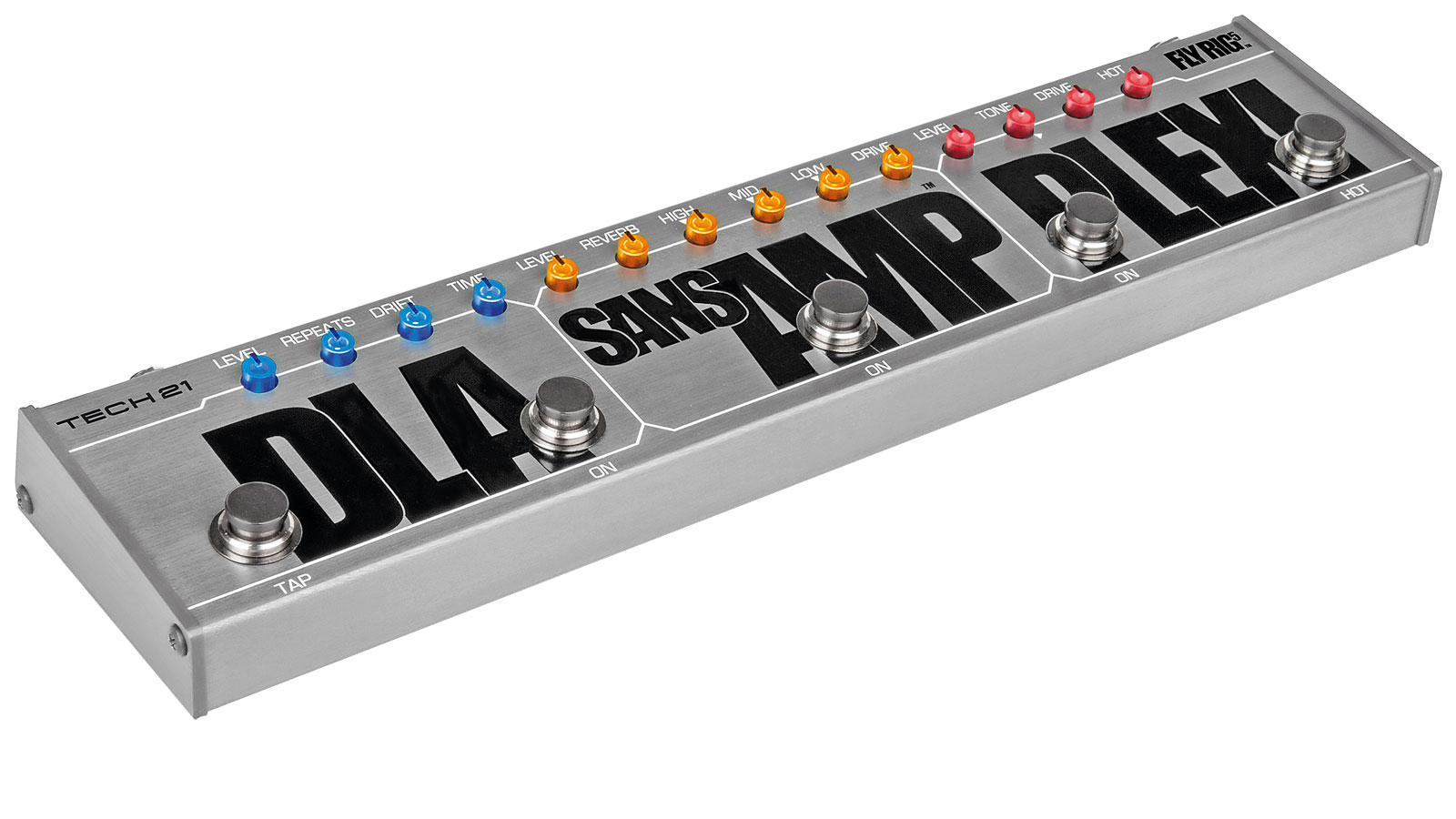MusicRadar Verdict
Slip one into your guitar case and you'll always be covered for sound.
Pros
- +
Extremely functional. Great back-up/fly-date/travelling-light option. Can be used anywhere in the world.
Cons
- -
Little to criticise here.
MusicRadar's got your back
There's plenty to be said for travelling light, but sometimes it's a necessity - transportation and travel constraints, or restrictions at a particular venue could possibly see you getting to a gig without your usual backline or pedalboard and being faced with unfamiliar, borrowed and possibly substandard equipment. So, how do you get your sound?
New York City's Tech 21 has the answer in the form of the Fly Rig 5: a small but perfectly functional pedalboard weighing just over 18oz (510 grams), measuring less than a foot long (300x70mm).
"The Plexi distortion offers the flavour of a Marshall cruising on hot valves, and the delay sounds really good"
It's powered by a slim single 12-volt DC adaptor that is auto-switching, so it can be used anywhere in the world, with voltages from 100 volts to 240 volts, adding to its portability appeal. What you get is the equivalent of five stompboxes, or four effects and an amp simulator, depending on how you view the SansAmp.
The SansAmp is, in fact, at the heart of the Fly Rig, taking up the centre section of the unit. Stomp on its footswitch and its six mini control knobs light up blue. You get level and drive knobs, three-band EQ and a spring reverb emulation based on the Boost RVB pedal. In front of the SansAmp, you get the Plexi section, based on Tech 21's Hot-Rod Plexi pedal.
One footswitch emulates the natural overdrive and distortion of a late-60s Marshall, with sound dialled in with level, tone and drive controls. A second 'Hot' footswitch brings in up to 21dB of boost and can be used independently of the Plexi distortion. Last in the signal chain is the DLA, a delay with tap tempo.
Sounds
Of distinctly robust metal construction, the Fly Rig has high-quality footswitches that are far enough apart to keep the whole thing uncluttered and easy to operate. You can plug it into a guitar amp or straight into a PA or mixing desk.
With the latter, the amp and speaker simulation from the SansAmp section ensure that you are getting the right sort of mic'd amp sound, but the SansAmp still has its use with your own (or someone else's) amp, where it can easily fulfil the function of an overdrive pedal.
It's voiced to have a Fender-ish chiming clean tone with the drive knob down, but higher settings of drive dirty things up nicely. Even if you choose not to use this section, you've still got boost, distortion and delay to play with.
The Plexi distortion offers the flavour of a Marshall cruising on hot valves, and the delay sounds really good - it's voiced to sound like vintage tape delay, and besides the standard controls for level, repeats and delay time, there's a drift knob for a touch of wow and flutter.
The Fly Rig 5 is an extremely functional unit that contains arguably the most essential effects. It's also a life-saver should your equipment go down at the last minute, as well as being the answer to the prayers of guitarists who need to travel light.
Trevor Curwen has played guitar for several decades – he's also mimed it on the UK's Top of the Pops. Much of his working life, though, has been spent behind the mixing desk, during which time he has built up a solid collection of the guitars, amps and pedals needed to cover just about any studio session. He writes pedal reviews for Guitarist and has contributed to Total Guitar, MusicRadar and Future Music among others.
“A synthesizer that is both easy to use and fun to play whilst maintaining a decent degree of programming depth and flexibility”: PWM Mantis review
“I feel like that song had everything we needed to come back with”: Bring Me The Horizon’s Lee Malia on Shadow Moses, its riff and the secrets behind its tone, and why it was the right anthem at the right time
“I said, ‘Are we sure we can write a song about death?’”: The story of Mike + The Mechanics' classic No.1 The Living Years











